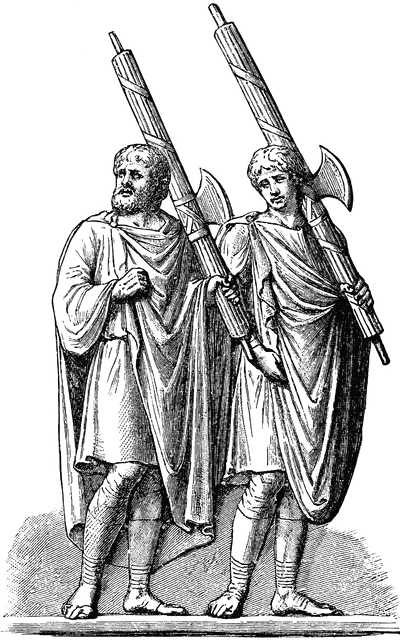 After reading the ancient texts of Roman Kings and Empires, such as Caesar’s de Bello Gallico and the Res Gestae of Augustus, a common theme seems to have risen. Both of these leaders, pivotal individuals in the construction and flourishing of the Roman Empire, relied heavily on the support of their peoples. They conquered many lands and built a vast civilization over the long years of their lives. While these individuals were at the pinnacle of this movement, they were but orchestrating the continued construction of something far greater than themselves. They were contributing, bit-by-bit, to the construction of a multi-generational project–the civilization of a nation.
After reading the ancient texts of Roman Kings and Empires, such as Caesar’s de Bello Gallico and the Res Gestae of Augustus, a common theme seems to have risen. Both of these leaders, pivotal individuals in the construction and flourishing of the Roman Empire, relied heavily on the support of their peoples. They conquered many lands and built a vast civilization over the long years of their lives. While these individuals were at the pinnacle of this movement, they were but orchestrating the continued construction of something far greater than themselves. They were contributing, bit-by-bit, to the construction of a multi-generational project–the civilization of a nation.
These accomplishments are a reflection of the honorable fasces–a symbol of strength through unity among the Roman people. These consisted of an axe encircled in birch rods bound by a leather cord, and were carried in procession of people of power as a representation of their leadership. The bundle of birch rods is a metaphor passed down through the generations to represent the strength and potential of the collective. While one birch rod can be easily snapped, as a single individual can only progress so far in his accomplishments, a bundle of these rods remains unbreakable. Caesar and Augustus would not have achieved much of anything without the strength of their people. In having a collective working toward a goal greater than any one individual, colossal potential can be reached.
The Pyramids of Giza, the Hanging Gardens of Babylon, the Lighthouse of Alexandria, and all other tremendous accomplishments of ancient peoples were accomplished through an adherence to a lofty goal and respect for a potential greater than one’s personal scope. With the current improvements in technology, accomplishing goals has become a more rapid process. Skyscrapers seem to go up overnight and cities appear within a few years, due to improved infrastructure and fast-paced lifestyles. In this increased speed of construction, people tend to lose cognizance of higher powers. Individuals tend to neglect the power of the collective (unless you consider the poorly infrastructured but highly effective hackivists, Anonymous) in regards to patience. Whatever does not incite immediate pleasure results in avoidance. As opposed to striving after ambitious goals outside the scope of quick completion, people settle for things in which they can see the end. However, true inspiration and accomplishment comes from looking past the scope of ready achievement. Be it in novel writing, empire building, or art, delayed satisfaction can yield truly breathtaking results.
One individual, Scott Weaver, has represented the strength of dedication and progress toward a lofty goal in his 100,000 toothpick kinetic sculpture of San Francisco–Rolling Through The Bay. While the project has already taken him over 35 years to construct, he is not finished. Weaver has represented, in the video below, that he is not finished. While the balls move down the tracks, he comments on how the speed is not perfect, and as one falls off the track, acknowledges that he must fix that. There is still work to be done and that work may never be finished. Just looking at the sculpture inspires a sense of wonder. A simple toothpick is so small, so mundane, but when coordinated with ten of thousands of its kind, it becomes something greater. I believe Weaver understands the idea of delayed gratification and the power of the collective. While he may have been the only individual working on building this monumental sculpture, the continued period of time he has spent in its construction is a different form of unity. It is the adherence to dedication, a trait that is not as largely expressed in modern times as it has been in the ancient world. With the advancements in technology, the application of this one trait–this prolonged perspective–would yield results unfathomable to our current minds.
Just as birch rods bound together cannot be broken, a journey of 100,000 toothpicks results in a legacy that cannot be forgotten. Toothpick-by-toothpick and person-by-person, the colossal can be possible.



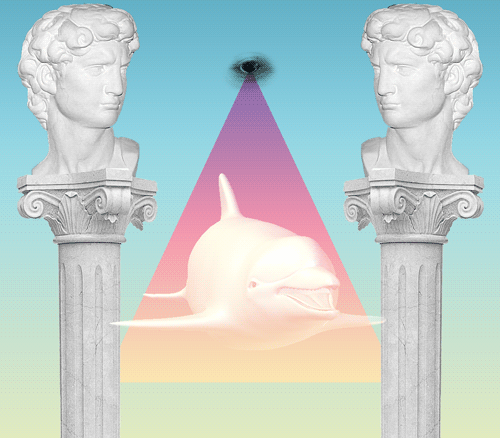
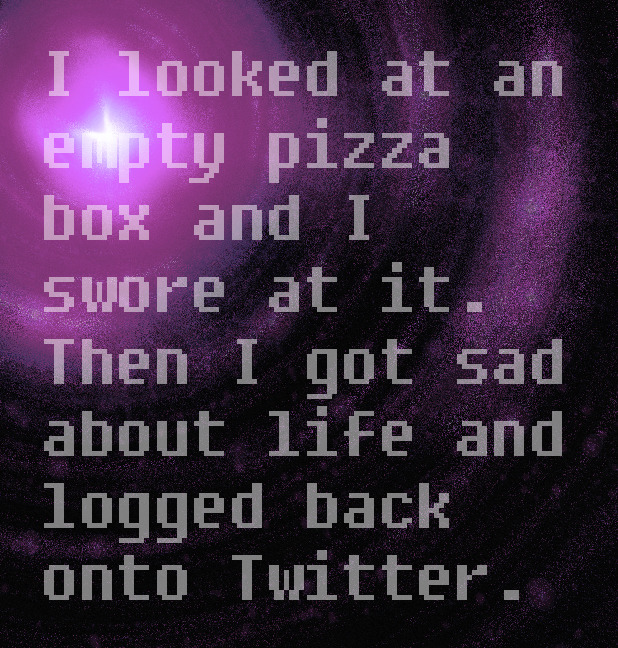
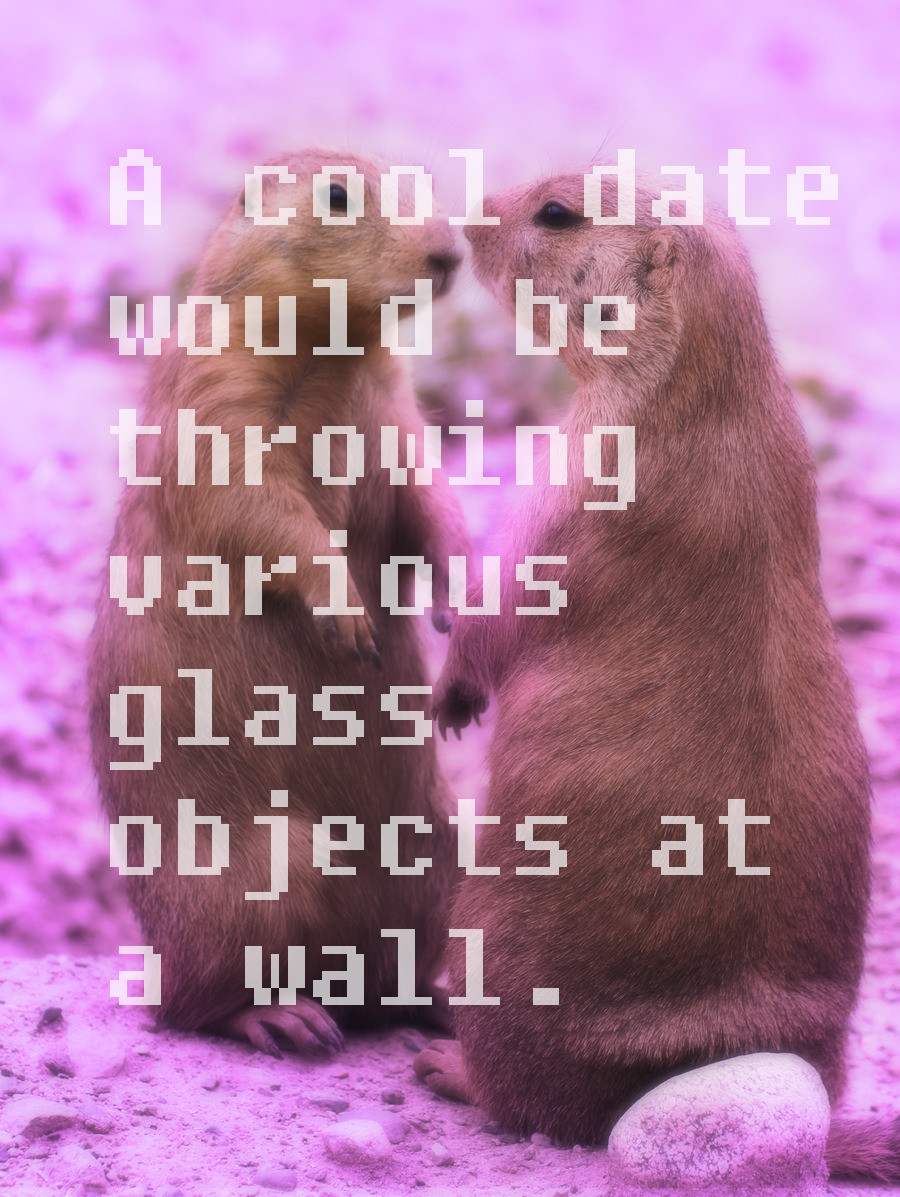 Texting conversations can kill relationships as the blunt unspoken words instantly traded back-and-forth can escalate emotions in false directions of intentions. Love can exist via a phone and this is strangely alienating. Because I’m Purple does a spectacular job of revealing this. By mockingly prodding at the false romanticism created via instant-messaging, a sense of disbanded heartache gets conveyed to the readers of the poem. Image-macros of prairie dogs take on the background for a perverse thought or desire, making that thought both a byproduct and machination of the interaction we have with the Internet. It is almost a strange love-affair where we are mental addicts to an illustrious drug. One piece that is particularly interesting pokes at this strange love-affair by inserting a new medium of transaction.
Texting conversations can kill relationships as the blunt unspoken words instantly traded back-and-forth can escalate emotions in false directions of intentions. Love can exist via a phone and this is strangely alienating. Because I’m Purple does a spectacular job of revealing this. By mockingly prodding at the false romanticism created via instant-messaging, a sense of disbanded heartache gets conveyed to the readers of the poem. Image-macros of prairie dogs take on the background for a perverse thought or desire, making that thought both a byproduct and machination of the interaction we have with the Internet. It is almost a strange love-affair where we are mental addicts to an illustrious drug. One piece that is particularly interesting pokes at this strange love-affair by inserting a new medium of transaction.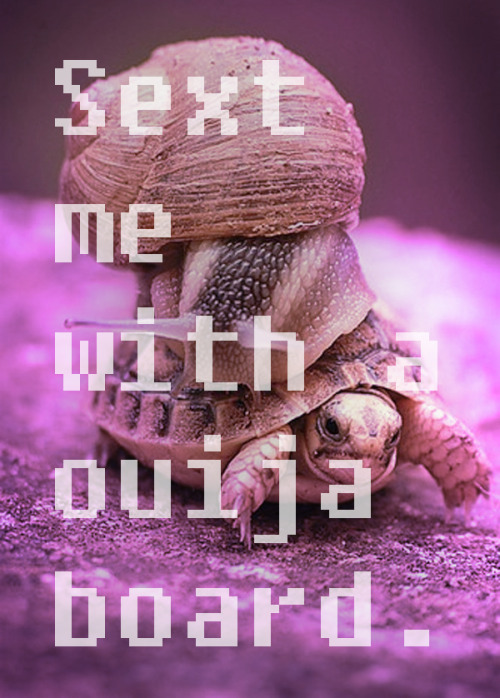
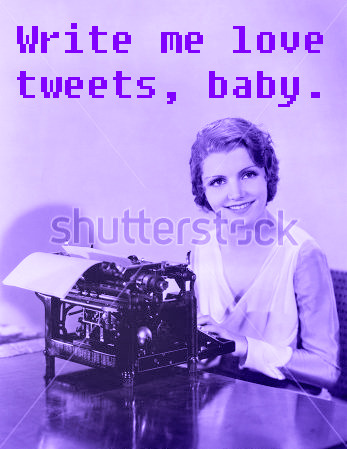


 You have created a new art form.
You have created a new art form.